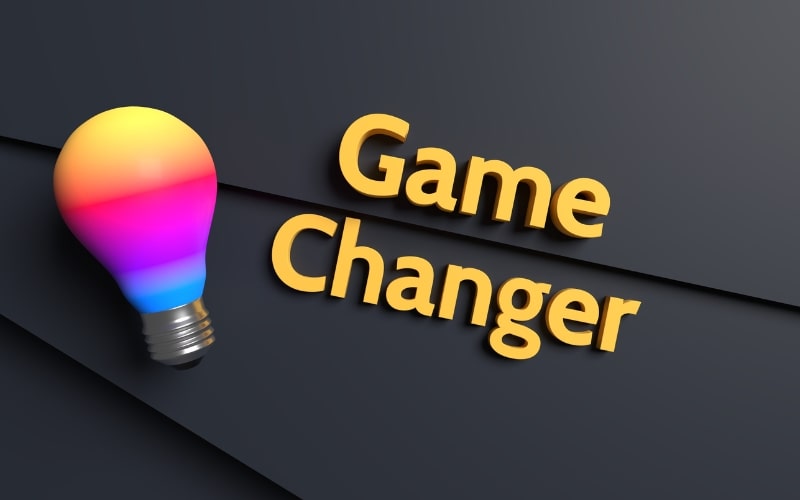Typography has always played a crucial role in web design. It not only dictates how text is read but also significantly impacts the overall aesthetics and user experience of a website. As we move into 2024, new trends in typography are emerging, promising to reshape the landscape of web design. This article explores the latest typography trends set to dominate the web design scene in 2024, offering insights on how these trends can be effectively implemented to enhance user engagement and improve overall website performance.
Variable Fonts: A Game Changer in Typography Trends

Variable fonts have been around for a few years, but their popularity is set to soar in 2024. Unlike traditional fonts, variable fonts offer multiple styles within a single file. This flexibility allows designers to create more dynamic and responsive web designs without compromising on load times. The ability to fine-tune weight, width, and other attributes provides unparalleled customization options.
Benefits of Variable Fonts:
- Improved Performance: With fewer font files to load, websites can achieve faster load times, which is crucial for retaining visitors.
- Enhanced Responsiveness: Variable fonts adapt seamlessly to different screen sizes and resolutions, ensuring a consistent experience across devices.
- Creative Freedom: Designers can experiment with various styles and transitions, adding a unique flair to their projects.
Oversized Typography: Making a Bold Statement
Oversized typography is not just a trend; it’s a statement. In 2024, expect to see more websites utilizing large, bold fonts to capture attention and convey messages effectively. This trend works exceptionally well for headlines, hero sections, and call-to-action buttons.
Why Oversized Typography Works:
- Immediate Impact: Large fonts grab attention instantly, ensuring that key messages are not missed.
- Clear Hierarchy: It establishes a visual hierarchy, making it easier for users to navigate and digest content.
- Aesthetic Appeal: Oversized typography adds a modern and edgy look to web designs, making them stand out.
Minimalist Typography: Less is More
Minimalism continues to be a significant influence in web design, and typography is no exception. In 2024, minimalist typography will focus on simplicity and clarity, using clean and straightforward typefaces to enhance readability and user experience.
Key Features of Minimalist Typography:
- Clean Fonts: Sans-serif fonts like Helvetica and Arial will dominate, providing a crisp and uncluttered look.
- Ample White Space: Minimalist typography leverages white space to highlight text and make pages feel less crowded.
- Subtle Accents: Simple design elements like underlines and color changes can add emphasis without overwhelming the user.
Custom Typography: Adding a Personal Touch

Custom typography is becoming increasingly popular as brands seek to differentiate themselves. In 2024, more websites will feature bespoke typefaces that reflect their unique identity and values.
Advantages of Custom Typography:
- Brand Consistency: Custom fonts help maintain a consistent brand image across all digital platforms.
- Unique Identity: They provide a distinct look that sets a website apart from competitors.
- Enhanced Engagement: Unique typography can captivate users and encourage them to spend more time exploring the site.
3D Typography: Adding Depth and Dimension
3D typography is set to make a big splash in 2024. This trend involves creating text that appears to pop off the screen, adding depth and dimension to web designs. 3D typography can be used for logos, headlines, and special effects to create a memorable user experience.
Why 3D Typography is Effective:
- Visual Interest: It adds an element of surprise and intrigue, making websites more engaging.
- Dynamic Effects: 3D text can incorporate animations and transitions, enhancing interactivity.
- Modern Aesthetics: It aligns with contemporary design trends, giving websites a cutting-edge look.
Animated Typography: Bringing Text to Life
Animation is not just for graphics; it’s becoming a vital part of typography in web design. Animated typography involves adding motion to text elements, creating a dynamic and interactive experience. In 2024, this trend will be more prevalent as designers look for ways to capture and retain user attention.
Benefits of Animated Typography:
- Increased Engagement: Movement naturally draws the eye, helping to keep users engaged with the content.
- Storytelling: Animation can guide users through a narrative, making the content more compelling.
- Interactive Elements: It encourages user interaction, enhancing the overall user experience.
Retro and Vintage Fonts: Nostalgia Meets Modern Design
Nostalgia is a powerful tool in design, and retro and vintage fonts are making a comeback. These fonts evoke a sense of familiarity and nostalgia, appealing to users on an emotional level. In 2024, expect to see more websites incorporating retro typography to create a unique blend of old and new.
Appeal of Retro and Vintage Fonts:
- Emotional Connection: They tap into users’ memories and emotions, creating a sense of nostalgia.
- Distinctive Style: Retro fonts add character and personality to web designs.
- Versatility: They can be paired with modern elements to create a harmonious and visually appealing design.
Geometric Fonts: Precision and Modernity
Geometric fonts, characterized by their clean lines and shapes, are set to be a major trend in 2024. These fonts convey a sense of precision and modernity, making them ideal for tech and corporate websites.
Features of Geometric Fonts:
- Clean Lines: They provide a sleek and professional look.
- Versatility: Geometric fonts work well in various contexts, from logos to body text.
- Modern Aesthetic: They align with contemporary design principles, making websites look up-to-date.
Handwritten Fonts: Personal and Authentic

In a digital world, handwritten fonts add a touch of authenticity and personality to web designs. In 2024, the use of handwritten typography will continue to grow, providing a counterbalance to the precision of digital fonts.
Benefits of Handwritten Fonts:
- Personal Touch: They create a sense of intimacy and connection with users.
- Unique Style: Handwritten fonts add a unique and distinctive look to websites.
- Versatility: They can be used for a variety of elements, from headings to quotes.
Conclusion
Typography trends in web design are constantly evolving, and 2024 promises to bring exciting developments. From variable fonts to inclusive typography, these trends offer new opportunities for designers to create engaging, user-friendly, and visually appealing websites. By staying ahead of these trends and implementing them effectively, you can enhance the user experience, boost engagement, and ultimately improve traffic and sales for your website. Thus, improving traffic and sales for your website. Read more on the other reasons why your website isn’t getting traffic. Stay tuned for more insights and tips on the latest in web design and development.


